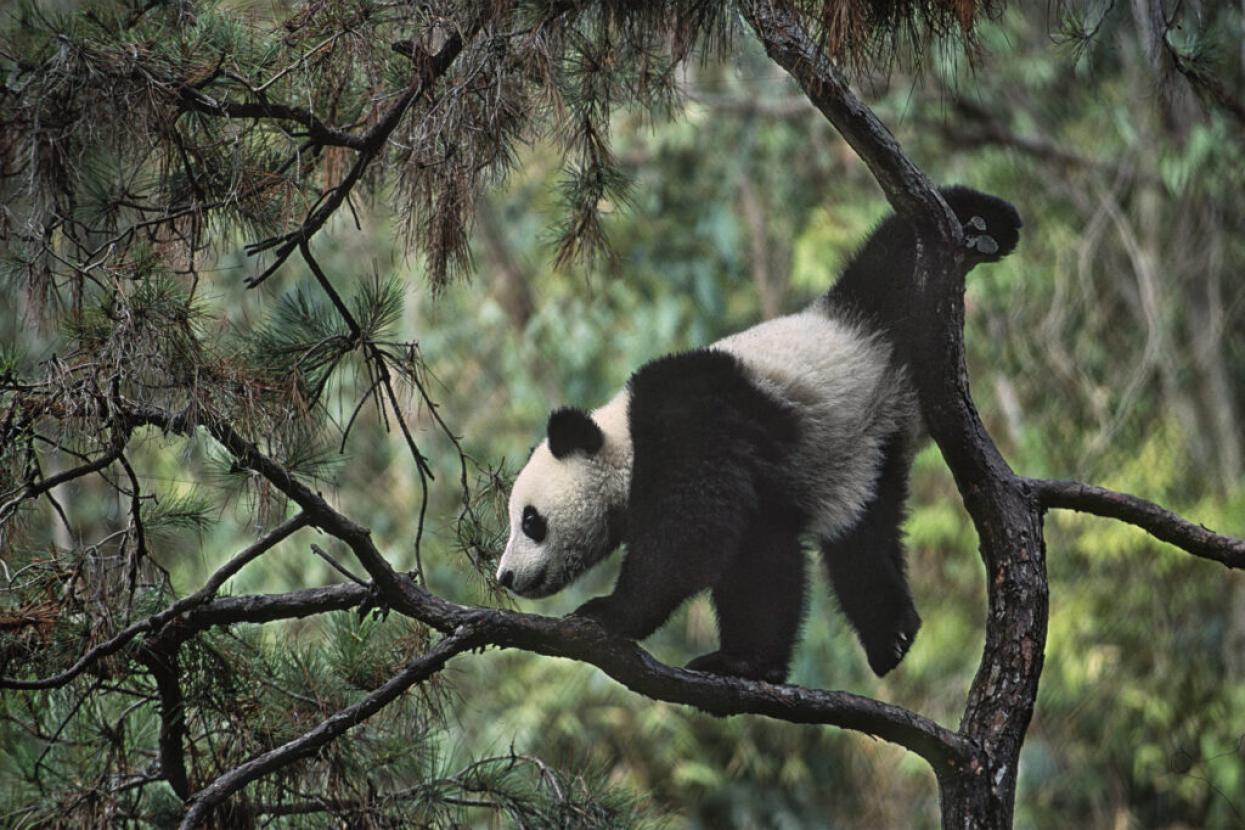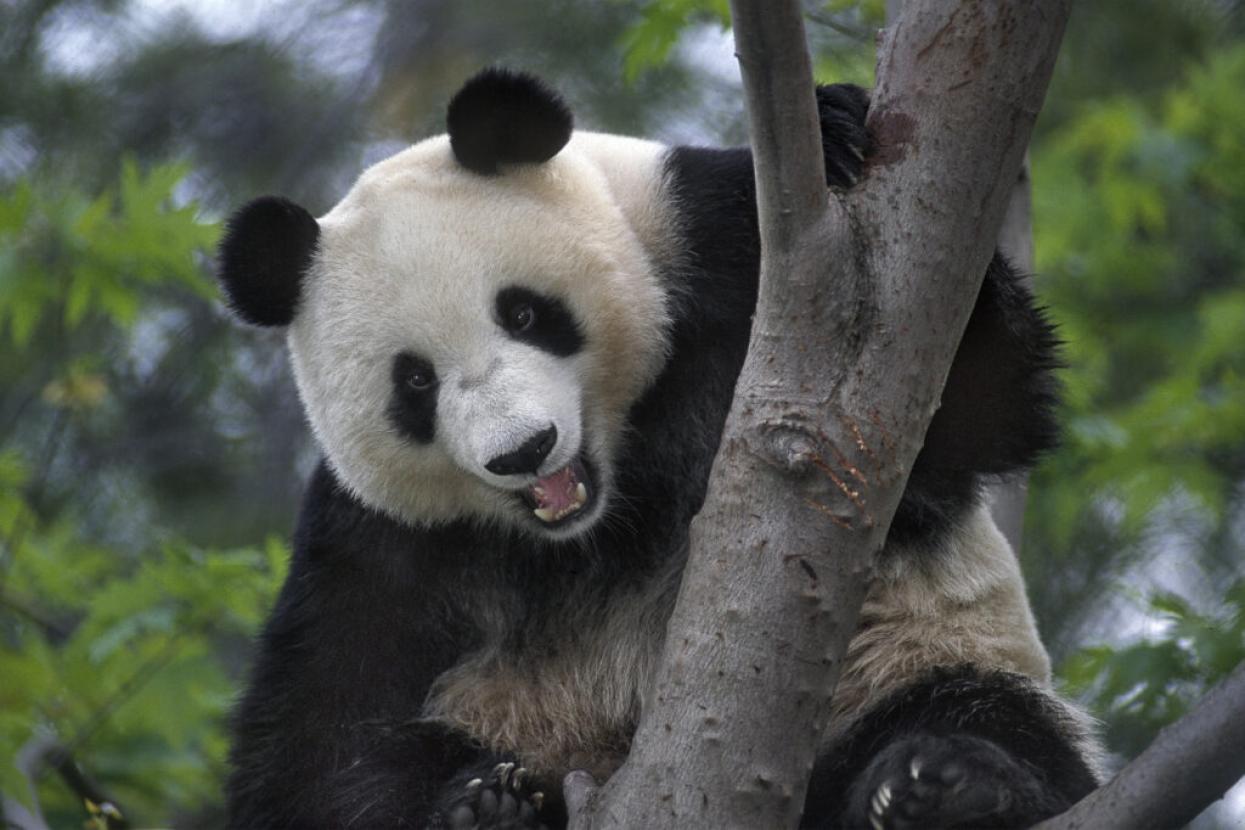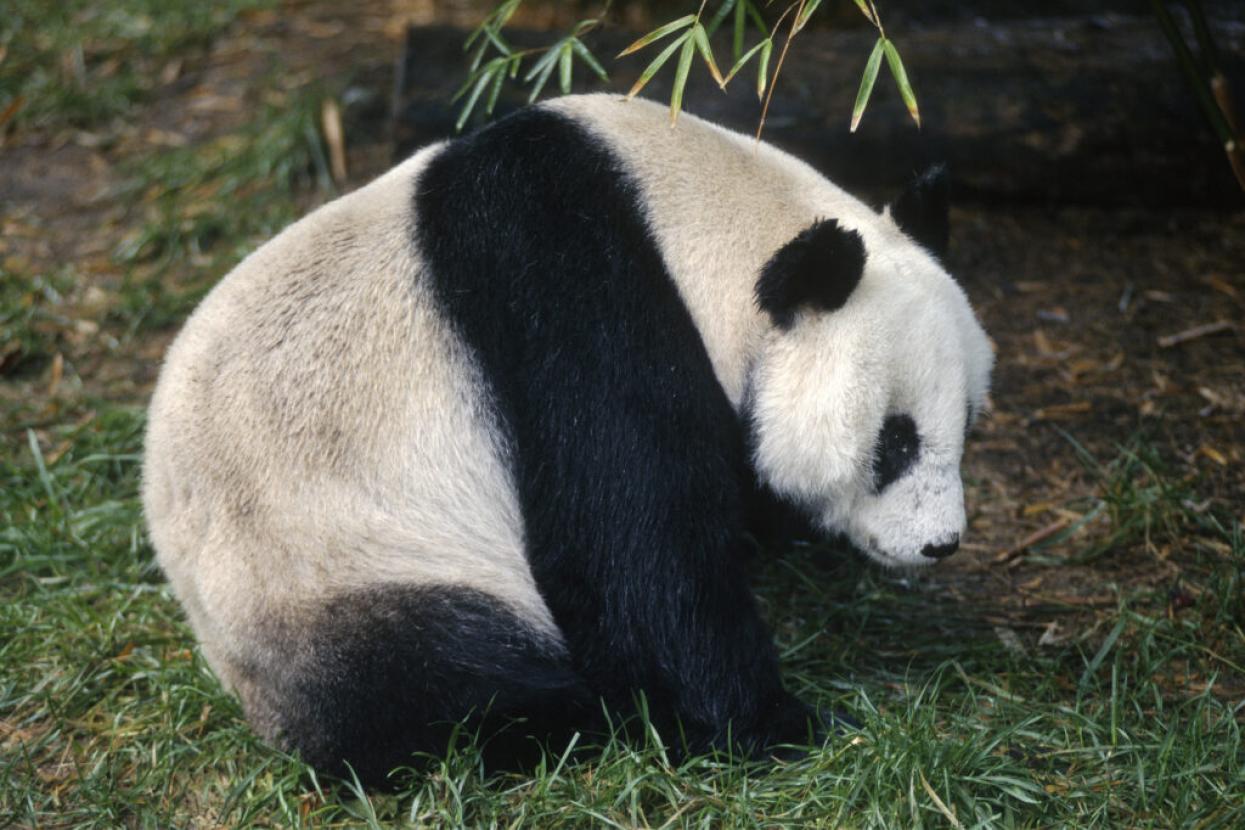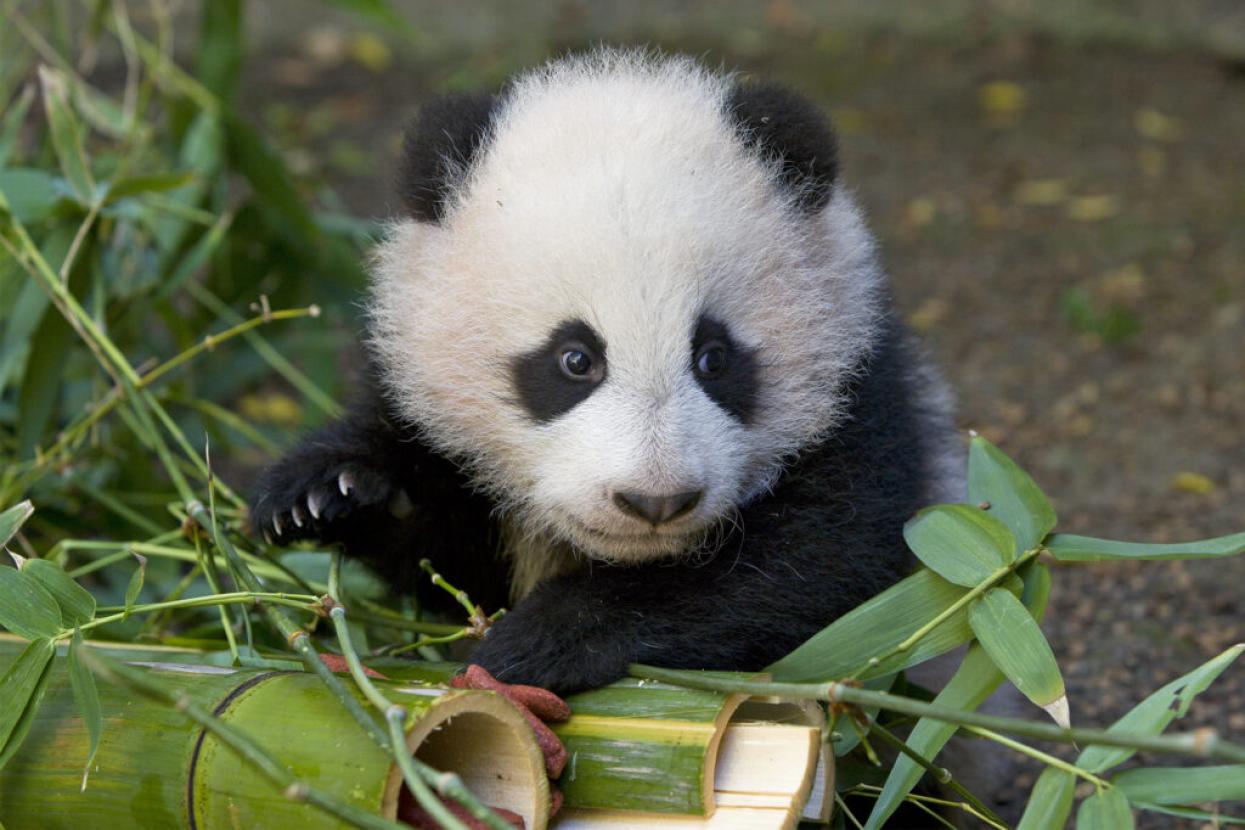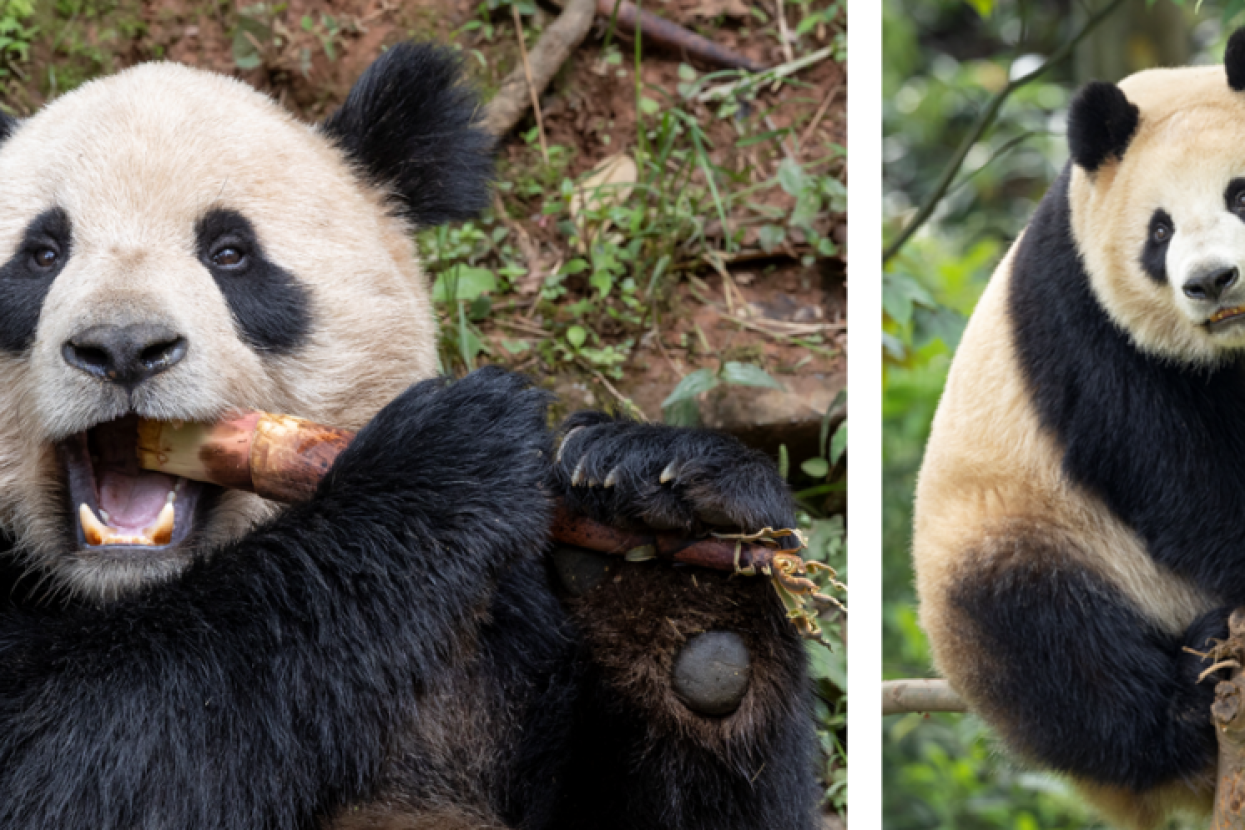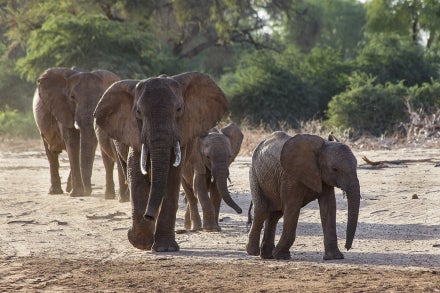
Giant pandas have tumbled their way into the hearts of people around the world. With their iconic black-and-white faces and curious, playful nature, these charismatic bears inspire awe and admiration for all who have the chance to fall in love with them. In China pandas are a national treasure, and across the globe they’re adored by countless wildlife allies. Giant pandas have long been—and will always be—a cherished part of our San Diego Zoo Wildlife Alliance family.
For 30 years, we’ve had the incredible honor of working alongside our conservation partners in China to save, protect, and care for giant pandas. In the 1990s, when populations dwindled, we united to secure the future for this vulnerable and beloved species. Together we forged a conservation alliance built on hope, friendship, and collaboration. Our partnership is a powerful example of how, when we work together, we can achieve what was once thought impossible. By combining our strengths, knowledge, and resources, we’ve helped shift panda recovery from an uncertain future to one of hope and prosperity. And, we look forward to a new chapter of panda conservation as we continue to build a global community of allies that fall in love with China’s wildlife.
For 30 years, we’ve worked with conservation partners in China to save, protect, and care for giant pandas.
Giant Leaps in Conservation
When our partnership began, scientists didn’t know if it would be possible to save giant pandas. Little was known of their reproductive physiology, behavior, ecology, or health needs. But as populations were declining, we were committed to helping reverse this troubling trend. A transformative agreement formed and two pandas came to the San Diego Zoo on a 12-year loan to support population sustainability through a critical conservation breeding program. And when Bai Yun and Shi Shi arrived in 1996, the future of giant panda conservation changed forever.
Giant pandas came to the San Diego Zoo on a historic loan in 1996, beginning a new era of conservation and collaboration that’s proved vital to saving this vulnerable species.
With the arrival of Bai Yun and Shi Shi, there were many groundbreaking “firsts.” After a few years of care and with growing panda knowledge, Bai Yun became pregnant through artificial insemination in 1999. It was the first successful assisted panda reproduction outside of China and a celebratory milestone. Months later, the veterinary team conducted the first-ever ultrasound on a giant panda, showing Bai Yun’s tiny fetus. We were overjoyed when Hua Mei was born on August 21, 1999, making history as the first cub to survive and thrive in the United States.
Hua Mei was the first of six giant panda cubs born at the Zoo, making history as the first cub to survive and thrive in the United States and the first cub born outside China through artificial insemination.
A few years later, in 2003, Gao Gao arrived at the Zoo. He would go on to create a legacy for his species. He and Bai Yun became extremely successful as a mating pair, welcoming five cubs together. Mei Sheng (male, born 2003), Su Lin (female, born 2005), Zhen Zhen (female, born 2007), Yun Zi (male, born 2009), and Xiao Liwu (male, born 2012) were all vital additions to the global population of this then-endangered species. Gao Gao, Bai Yun, and all their offspring have since returned to China, where their legacy and family tree continue to grow.
“This is a story of hope, and a reminder that when we work together, we can recover a species from the brink of extinction. Hope is fundamentally a call to action, and the giant panda’s story is one I believe will serve to inspire increased collaborative efforts to save many, many more species.” —Megan Owen, Ph.D., Vice President of Conservation Science, San Diego Zoo Wildlife Alliance
In addition to breeding efforts to help the species recover, long-term sustainable conservation solutions require a multidisciplinary approach. As we worked together with our partners, our critical findings on reproductive behavior and physiology, nutrition, and health played a vital role in helping save pandas. For instance, by developing a giant panda milk formula, contributing to other neonatal techniques, and supporting our Chinese conservation partners through groundbreaking discoveries, the survival of nursery-reared cubs increased dramatically, from less than 10 percent to more than 90 percent. As we helped monitor pandas across their range and worked to better understand the threats they’ve faced, we helped to inform vital conservation decisions to protect these bears across their native habitats.
Our efforts to develop a giant panda milk formula and other neonatal techniques have helped newborn cubs thrive.
Through these efforts, giant panda populations rebounded and have continued to increase, as does hope for their future. In 2021, the global conservation community reached a major conservation milestone when giant pandas were downgraded from endangered and reclassified as vulnerable. But even with this remarkable progress, there’s much to be done to ensure they’ll survive and thrive for generations to come.
Onward and Upward
In the exciting next step of our 30-year partnership, we’re honored to welcome giant pandas back to the San Diego Zoo. Yun Chuan (pronounced “yoon chu-an”) and Xin Bao (pronounced “sing bao”) will be arriving at the Zoo this summer, and we can’t wait for you to meet the newest members of our global family. Yun Chuan has deep connections to this legacy of panda conservation, as he is Bai Yun’s grandson and Zhen Zhen’s son. His arrival bridges the past and future of our shared efforts, reminding us of all that is possible when we come together to protect wildlife.
The arrival of Yun Chuan and Xin Bao marks an exciting new chapter in our collaborative conservation efforts for giant pandas.
Before long, you’ll be able to fall in love with giant pandas at the Zoo once more, joining new generations across the globe who are inspired to save them. Together with our Chinese friends and conservation partners, and with you by our side, we’ll continue to find solutions for healthy, flourishing populations. Thank you for joining us on this journey as we enter a new era of giant panda conservation.
Stay tuned for updates and discover more about Yun Chuan and Xin Bao, the two giant pandas we’re welcoming to the San Diego Zoo.

